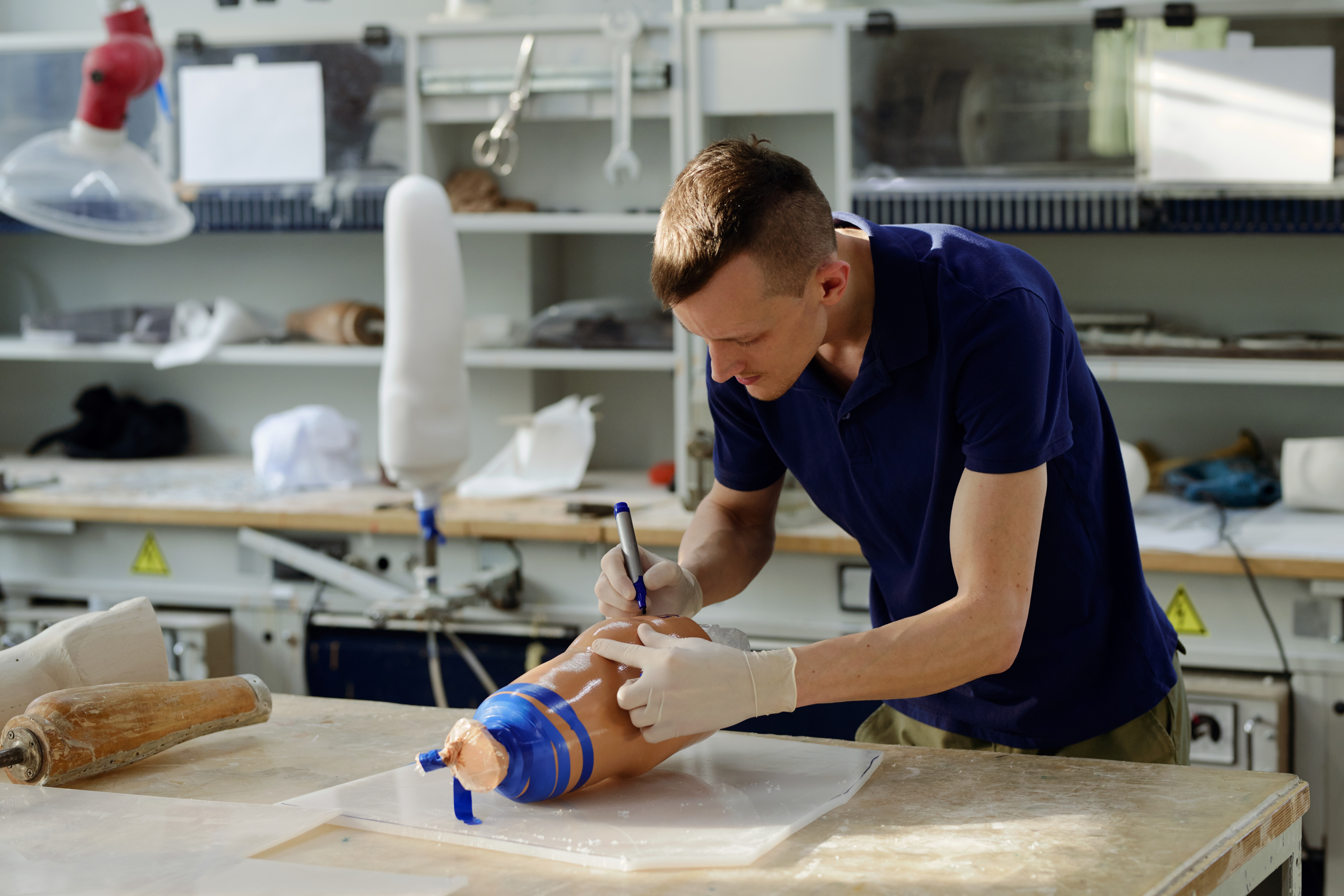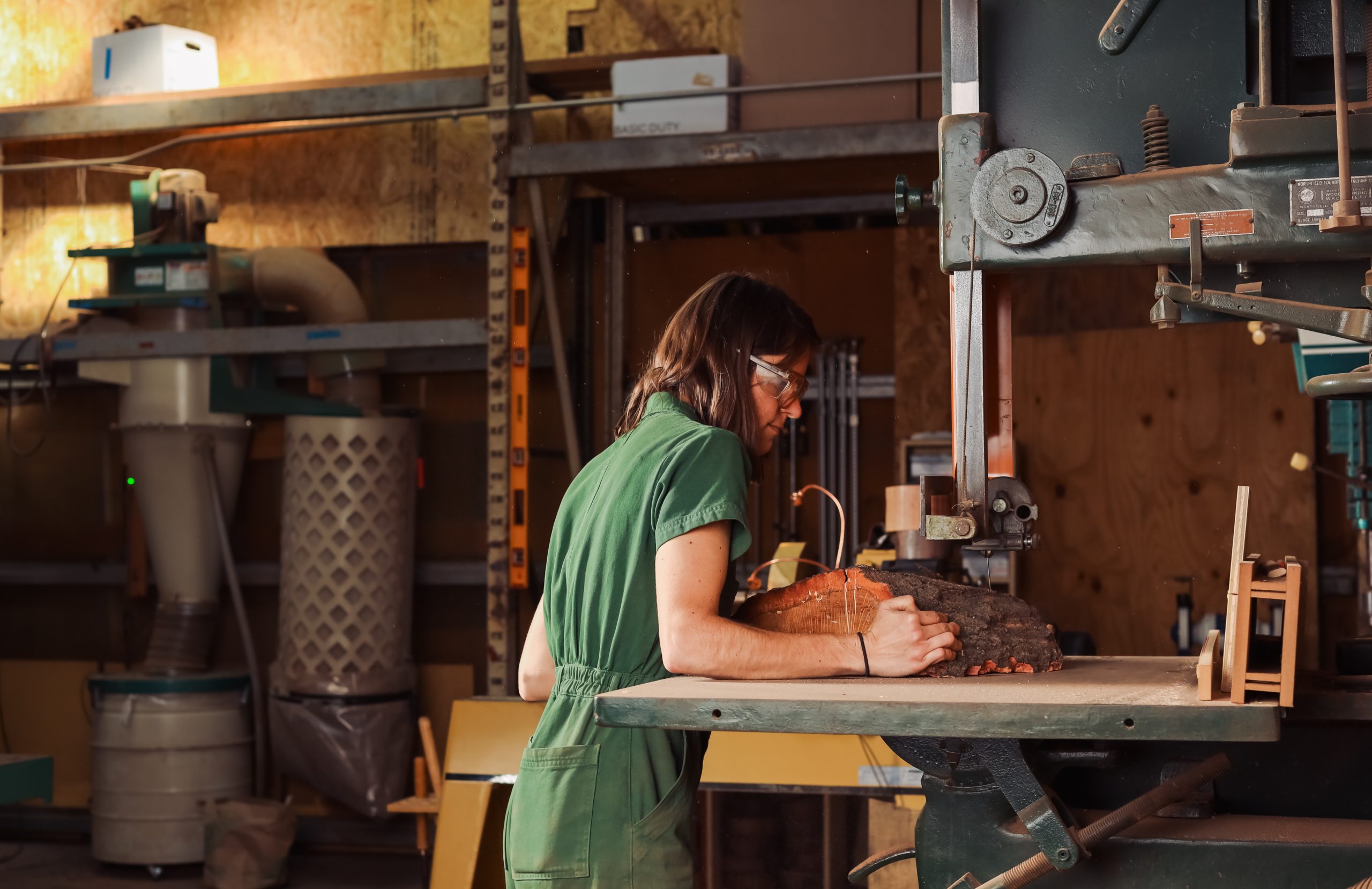Blog
How do we ensure to contribute to the necessary changes for a better future with a distributed design approach? And how do makers regard this topic?
This is one of the questions we are asking ourselves at DDC – Danish Design Center as we are curious about how Distributed Design might contribute to the transition to a circular economy.
Without closing the eye to the paradox that seems to be present in a makerspace context which concerns that, on the one hand, the focus for many is on sustainability agendas like local production, customisation, even circular product design, etc. but on the other hand, unsustainable practices also tend to be reproduced generating waste as well as products and prototypes with low to little focus on value creation and functionality.
In continuation, there is great potential in enhancing and supporting the part of the movement that can help push one of the most important societal agendas of our time.
We found it interesting to investigate on a small scale how makers and designers might relate their own work and the topic of circularity to certain topics and categories in the distributed design field.
We selected these categories as the most characteristic of makerspaces and distributed design in general. They are listed below, including a definition of the terms:
- Community – Focus on the community created in fab labs and makerspaces – how knowledge can (easily) be shared among peers and the possibility of helping each other out in the spaces.
- Open source – Decentralised software development model that encourages open collaboration, with products such as source code, blueprints, and documentation freely available for use or modification.
- Local production – Or ‘distributed manufacturing’ is a decentralised manufacturing approach. Makerspaces and fab labs typically enable small batches of products and goods locally and source local materials.
- Activism – The policy or action of using campaigning to bring about political or social change. Distributed Design as a movement tends to contain activism elements and allows for makers and designers to raise awareness.
- Customisation – The action of making or changing something according to the buyer’s or user’s needs. In fab labs and makerspaces, it is possible to customise products and processes to a greater extent than mass production allow.
- Interdisciplinary learning – The skills people who come in the makerspaces and fab labs have adopted or desire to adopt – either via what the fab lab offers or by exchanging knowledge with peers.
In the following, we are listing some insights derived from a workshop where makers and designers were asked to reflect upon the above categories and how these relate to their own practice as well as to circularity.
These reflections might be relevant for makerspaces and other stakeholders interested in distributed design and how makers regard and relate to this topic as well as what potentials they see.
Community
Related to the community, the makers highlighted that:
- The community aspect is an opportunity for us to get inspired, seek feedback, and share knowledge with each other.
- Via the community, distribution of awareness around important topics can be shared, and proactive communities can be created. In this way, we can be gathered and help fight the bigger system by organising ourselves in groups.
- By gaining a new mindset around circularity, we could get a desire to spread this (new) knowledge acquired in the community we are part of.
- Support can be received from independent designers instead of the industry, which can be valuable to us. These inputs from externals i.e., new ideas, help with the machines etc. – are a great way to prevent mistakes and thereby minimise the creation of waste.
Open source
In relation to open source, the makers highlighted that:
- Open source enables knowledge sharing and increased transparency, which is a key contribution (and approach) to increased circularity.
- It can enable more local production and thereby also minimise transport.
- The (good) solutions can have a bigger reach and hopefully impact.
- It gives us the opportunity to take an active part in solutions as it can enable fixing, repairing, maintaining, etc.
- It increases the availability of useful resources and even provides education for us.

Activism
Related to activism, the makers highlighted that:
- The DIY aspect can potentially contribute to a change in people’s perception of products and how they treat them.
- Activism can help fight the lack of knowledge as well as awareness that leads to the way that things tend to be (badly) designed as of today.
- Fab labs and makerspaces can be regarded as a potential network for activists
- Activism can help enable broad participation in activities and aim to spread awareness and knowledge for those who wish to participate and help address issues to contribute to a potential paradigm shift.
Customisation
Related to customisation, the makers highlighted that:
- We can think about how incorporating customisation can increase the focus on modulation of our creations and can help expand the value of products and materials.
- Customisation in the local space can be an opportunity for us to take cultural and geographical differences and variances into account.
- It can help us create unique and individual designs and thereby potentially lead to increased emotional attachment to artifacts.
- As a part of customisation, it makes sense to focus on on-demand production, which potentially can lead to less waste, demand for storage, etc.
- It can help us better adjust according to the need(s) of the users of our creations.
- There might be a trade-off that is worth highlighting which concerns how customisation also can lead to increased resource and energy consumption, whereas prioritizing streamlined solutions and productions can optimize this consumption.
Interdisciplinary learning
Related to interdisciplinary learning, the makers highlighted that:
- We can share knowledge with one another and seek the expertise we need.
- Interdisciplinary learning is necessary for us to be able to comprehend the entire life cycle of our creations fully.
- Learning from each other often leads to more thought-through solutions.
- Two (unexpected) fields can meet when learning from other fields, and we start seeing new opportunities that can be tested on a small scale. Take e.g., coding and embroidery.
Local production
And finally, in relation to activism, the makers highlighted that:
- Local production can help shorten delivery chains, minimise lead times, lower shipping costs and efforts as well as fight against unethical practices and conditions.
- For a circular economy, supporting local initiatives is crucial, and makerspaces can help to do so.
- The local production can help gain better knowledge, and feeling of materials applied for their creations and apply the local skills available.
- When producing locally, it can be fruitful to take advantage of existing spare parts and standardised solutions on the market.
The intersecting field of distributed design and circular economy is yet to be explored further, and makerspaces and makers can be contributing stakeholders to a variety of circular initiatives in society. For this, we need to keep an eye on how makerspaces and fab labs can support makers to the greatest extent possible in enhancing their work, focus, and execution on circularity.
Therefore, if you have any insights, inputs, or additional thoughts, both from a maker and makerspace perspective, please feel free to reach out to us at DDC via e-mail: [email protected]
If you wish to dive into an in-depth research study summed up and published as a resource on the website, you can visit it here
